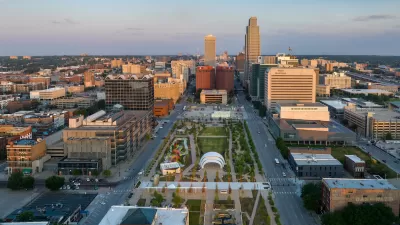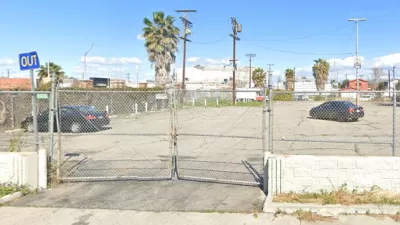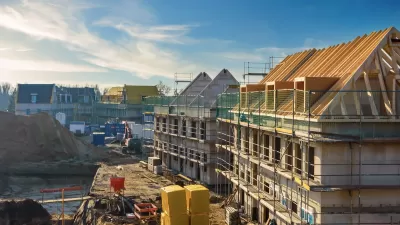The city auctioned off 58 lots at low prices to stimulate housing development. Half are still vacant.

Roughly two dozen properties auctioned off under Washington, D.C.’s Vacant to Vibrant program are still vacant, report Justin Wm. Moyer and Danny Nguyen in The Washington Post. “The program aimed to ‘produce and preserve affordable housing and create homeownership opportunities,’ according to promotional materials.”
According to the article, the city sold 56 sites in 2018 and 2019 in an effort to support the development of workforce housing. “Half of the 56 properties are inhabited and no longer owned by the city. The rest remain undeveloped, uninhabited or badly in need of repair. More than half of those vacant properties have returned to District ownership. In some cases, those who won auctions never took possession.”
“Joseph Schilling, who studies housing policy at the Urban Institute, said the program’s checks and balances are ‘consistent with how other cities have tried to tackle vacant properties,’ but the 1½-year deadline given to most of the developers was probably too short.” Developers are not required to provide proof of financing for a project beyond the purchase price, and the city has not penalized developers who have not fulfilled their agreements.
In contrast, a similar program in Baltimore has yielded more successful results. According to former Baltimore Housing Commissioner Michael Braverman, this was “because it identified developers who had a history of building affordable housing and partnered them with affordable housing nonprofits and community members. The program also helped developers secure financing and relaxed zoning requirements.” Baltimore also strictly enforced a system of fines for developers who failed to meet their deadlines.
FULL STORY: D.C. sold properties for affordable housing. Half are still vacant.

Study: Maui’s Plan to Convert Vacation Rentals to Long-Term Housing Could Cause Nearly $1 Billion Economic Loss
The plan would reduce visitor accommodation by 25,% resulting in 1,900 jobs lost.

Placekeeping: Setting a New Precedent for City Planners
How a preservation-based approach to redevelopment and urban design can prevent displacement and honor legacy communities.

Using Old Oil and Gas Wells for Green Energy Storage
Penn State researchers have found that repurposing abandoned oil and gas wells for geothermal-assisted compressed-air energy storage can boost efficiency, reduce environmental risks, and support clean energy and job transitions.

Washington State Plans Ambitious ‘Cycle Highway’ Network
The state is directing funding to close gaps in its existing bike network and make long-distance trips more accessible.

Homeowners Blame PG&E for Delays in ADU Permits
The utility says it has dramatically reduced its backlog, but applicants say they still face months-long delays for approvals for new electrical work.

Rethinking Wildfire Defense: How a Landscape Approach Can Protect Neighborhoods
Post-fire analysis of the Eaton Fire reveals that a landscape approach — including fire-resistant vegetation, home hardening, and strategic planning — can help reduce wildfire risk, challenging assumptions that trees and plants are primary fire hazards.
Urban Design for Planners 1: Software Tools
This six-course series explores essential urban design concepts using open source software and equips planners with the tools they need to participate fully in the urban design process.
Planning for Universal Design
Learn the tools for implementing Universal Design in planning regulations.
Borough of Carlisle
Caltrans
Heyer Gruel & Associates PA
Institute for Housing and Urban Development Studies (IHS)
City of Grandview
Harvard GSD Executive Education
Salt Lake City
NYU Wagner Graduate School of Public Service
City of Cambridge, Maryland





























